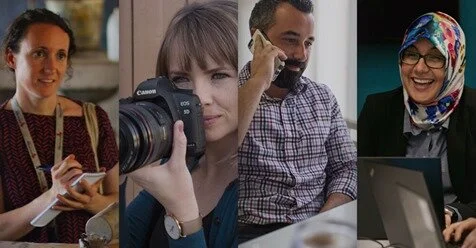By Corey Hutchins
During the month of December 2020, Colorado Media Project offered $5,000 matching grants to news local organizations around the state, to inspire philanthropic giving from individuals to support the vital role that local news played last year in keeping us safe, explaining tumultuous current events, and connecting us through isolation.
The 2020 #newsCOneeds matching challenge began with a goal of raising $250,000 among the 25 selected Colorado outlets in a single month. Participating news organizations included small, locally-owned rural and urban newspapers, local public radio stations, statewide digital outlets, nonprofit newsrooms, a public benefit corporation, a big city alt-weekly, a one-person startup, and more.
In the end, #newsCOneeds 2020 doubled that,
helping to raise more than $578,000 from 5,277 individuals
for nonprofit and locally-owned newsrooms across Colorado.
Newsroom leaders say the money helped hire freelancers, pay for more news gathering, update websites, purchase necessary equipment, keep journalists reporting on COVID-19 in their communities, and cover operating costs — for months in some cases.
Since 2018, Colorado Media Project has offered matching grants in coordination with the year-end national #NewsMatch campaign, which in 2020 broke a record by netting $47 million to nonprofit newsrooms around the country.
Colorado’s #newsCOneeds matching challenge is unique in the nation, in that any locally owned, locally operated Colorado news organization that is regularly publishing nonpartisan local news may apply — regardless of business model or distribution method. We think this is important, because so many of our local newsrooms are struggling to stay afloat, and many are seeking new ways to rally community support to sustain their operations into the future.
While newsrooms were encouraged to direct all of their marketing efforts to their own donation pages, a campaign website (thisisnewsconeeds.com) provided a unifying message — and even raised some donations, which were equally split among the participants. Newsrooms — even those not participating in the matching challenge — also used a common hashtag (#newsCOneeds) to spotlight some of the amazing journalism produced by local newsrooms in 2020.
Below (and here on Medium) we offer a handful of vignettes from some of the outlets that participated and what they learned in the process, in hopes the lessons are helpful to other newsrooms — and as more state-based efforts to support local journalism like the Colorado Media Project bloom in other places across the nation.
The #newsCOneeds campaign not only helped plug a monetary shortfall for this small newspaper, but also helped the paper retain readers and grow its news offerings.
Community served: Based in Nederland, Colorado, this for-profit hyper-local newspaper with a weekly circulation of 1,200 is the only news source that serves about 15 largely rural mountain town communities in what is called the Peak-to-Peak region west of Boulder, from Alan’s Park to Central City, including towns and canyons in between.
The challenge: The Mountain Ear newspaper had never asked for donations from its readers until the pandemic hit in the spring of 2020 and it lost about 20% of its advertisers in a single week.
Their solution: The #newsCOneeds campaign provided a roadmap and template appeal letters (thanks, News Revenue Hub!) for the paper to follow for the month of December to encourage its individual readers — and beyond — to donate. The paper needed to raise at least $5,000 to get a matching contribution of that much. “We met our goal and then some,” said publisher Barbara Hardt. “I know every newspaper just like us is struggling to just stay alive and relevant.” Some donations came from outside the paper’s circulation area, and even from out of state, including one $500 contribution from a supporter in New Mexico.
Impact from the campaign: Funds from the #newsCOneeds campaign allowed the Mountain Ear to renew subscriptions for anyone who said they couldn’t pay during the pandemic. That wound up being more than 100 people, Hardt said. The money also allowed the paper to continue printing, and to catch up on payroll. “It has allowed us to keep all of our bills and things that are coming in current, and still current from the money coming in now in April just to offset the amount of money that we lost because of COVID.”
In addition, the fundraising campaign made it possible for the paper to hire interns, and also launch a podcast.
What they learned: “I think the most important thing I learned is that people in the community are willing to support the paper and willing to support what we’re doing -- and how important it is to everyone else to have that news out there for them,” Hardt said.
Community served: The local public radio station broadcasts two signals — news and Tribal Radio — in the largely rural “Four Corners” region of southwest Colorado, with a special mandate to serve tribal communities including the Ute Mountain Ute and Southern Ute reservations.
The challenge: At the time of the campaign, the station had recently hired a news team to cover the impacts of COVID-19 in its community (supported in part by a Colorado Media Project Informed Communities grant) and had recently moved into a new space.
Their solution: Being able to tell listeners and potential donors that their contribution during the campaign could be matched was huge, says the station’s executive director, Tami Graham. “Having an outside entity saying ‘Hey, we’re going to give you a match of $5,000 for what your listeners raise as related to news’ just gave us that much more legitimacy as a producer of local content,” she adds. “Even though we’re great at fundraising, we were fundraising for a new thing” — news, local COVID-19 news — “and having the match really helped legitimize that.”
Impact from the campaign: KSUT is still producing local news and recently had its most successful spring pledge drive ever. “A lot of the (positive) feedback we got is around our local content, and the content partners that we have, and the production of our COVID reporting — which is still really the focus of our reporting right now,” Graham says. “It was definitely an important part of our first year … for this new initiative.”
Shay Castle is the new kind of local news entrepreneur we’ll see more of, popping up in cities where the local newspaper is fading. A former reporter for The Boulder Daily Camera, she left in 2019 to start her own newsletter and website. She called it BoulderBeat, and she fills gaps left in local news coverage by a skeleton-crew newspaper lashed by layoffs.
Community served: Paying and non-paying subscribers and the broader Boulder community.
The challenge: Shay had never run a fundraising campaign before; she hating to ask for money, and worried about sending too many pitches to subscribers who she feared might have newsletter fatigue.
Her solution: #newsCOneeds provided fundraising script templates and graphics Castle could include in her newsletters, and all of the newsroom participants used the hashtag #newsCOneeds so they could amplify each others’ best journalism and fundraise together on social media.
Impact from the campaign: BoulderBeat wound up raising $36,000 in 2020 — and about $15,000 of that came during the #newsCOneeds campaign. Castle was able to convert more than a dozen non-paying subscribers into paying readers.
What she learned: “More than the money, it was such a boost to know that so many people believe so strongly in what I'm doing,” she says. “This is a hard job: running my own business on top of being a journalist. Especially after the busy election season, I can start to feel depleted. This kept me going. I would never have run a campaign myself. I didn't know how, and I hate asking for money.”
Shay said that more data behind the campaign schedules would have been nice, however, specifically what research shows about the best times to hit up her audience for money. She worries, like any newsletter publisher does, about a delicate balance of respecting the inbox. “I didn’t want to bombard my readers,” she said.
Community served: With more than 20 publication titles, the state’s largest network of family-owned community newspapers serves readers in suburban Denver and into the foothills of the Front Range. (Fun fact: In May 2020, CCM changed ownership in a unique way that kept the chain in local hands.)
The challenge: Unlike some other free newspapers that rely on advertisements for revenue, the local chain was, in a way, used to asking for donations. Each October, CCM ran a voluntary pay campaign. Would readers pony up more two months later with a new fundraising drive?
Their solution: Project leaders from the Colorado News Collaborative and News Revenue Hub offered advice and training around key phrases in fundraising pitches. Colorado Community Media also told potential donors exactly where the money would go specifically: to purchase camera equipment and offer photojournalism training for the newspaper chain’s reporters.
Impact from the campaign: The timing for the 2020 #newsCOneeds campaign “was perfect for us to do a second push to readers to contribute,” said then-Colorado Community Media owner Jerry Healey. “We far exceeded in December the minimum needed for the $5,000 match. We ended up buying 10 sets of cameras that included a Canon body, long zoom lens, short zoom lens, portrait lens, flash and case. We also purchase a tripod and a 300mm telephoto lens that is shared amongst the reporters.”
A photography adviser at a local university conducted the training remotely. They purchased as much as they could from a local camera store. “With the combination of new photo equipment and training, our reporters are taking better pictures, which is helping our readership,” Healey said.
Created by Colorado Media Project for the 2020 #newsCOneeds campaign


